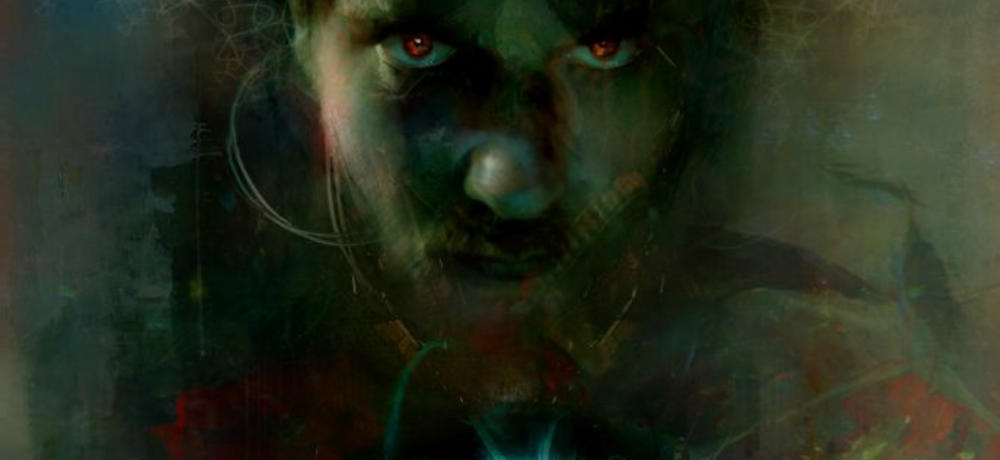
 I have no idea what the hell is going on in Sequence Break, Graham Skipper’s directorial debut. It’s spinning, nightmarish bit of psychedelic craziness that circles back onto itself multiple times, and the plot leaves so much to the viewer’s imagination that even the plot summary offers up little to clarify matters:
I have no idea what the hell is going on in Sequence Break, Graham Skipper’s directorial debut. It’s spinning, nightmarish bit of psychedelic craziness that circles back onto itself multiple times, and the plot leaves so much to the viewer’s imagination that even the plot summary offers up little to clarify matters:
A reclusive video arcade repairman (Chase Williamson) experiences bizarre biomechanical mutations and Cronenbergian hallucinations when a mysterious new arcade machine appears in his shop. Reality itself threatens to fracture as the young man works to solve its mystery – and overcome the new chaos that has entered his life.
You know what, though? I really don’t care. It’s been a good long while since I had a film in which I could really lose myself in the visuals and rhythms of the characters’ interactions, rather than having to keep track of myriad overlapping plots and personages. The cast is a pretty tight five members, for the most part, and that’s the key to the creeping claustrophobia of Sequence Break.
It seems like Skipper learned a lot from his work in Jackson Stewart’s Beyond the Gates, which has a similarly tight cast and retro-gaming vibe to it. Much like Stewart’s movie, Skipper’s utilizes every single aspect of its small budget and location, using them to its advantage. The movie has that same retro vibe as many of the films Skipper’s starred in, like the Joe Begos pictures Almost Human and The Mind’s Eye, but without the slavish need to emphasize gore over everything.
Seeing Chase Williamson and Fabianne Therese reunited as a couple after their wonderful work together in 2012’s John Dies at the End is really quite wonderful. Their interplay here is just as delightful as it was in that film, and it seems that Skipper has a really strong sense of what works with his former Beyond the Gates co-star Williamson.

That’s a great thing, because the movie is, at its heart, a love story about Williamson’s strange, introverted Oz, and Therese’s oddball Tess. They’re two loners who find one another — and some eerie sense of belonging — thanks to circumstance. However, it’s also circumstance which brings the board of an otherworldly video game into the shop where Oz works, causing the aforementioned hallucinations and biomechanical peculiarities.
Granted, there’s also John Dinan’s character, credited only as “The Man,” who has some obsession with the video game board and offers quite a bit of dramatic weight, interjecting himself at key points in the Sequence Break narrative to further the conflict. This is actually a good thing, rather than a plot device, because otherwise, we’d be stuck seeing Oz play a video game while melding with the game cabinet — which has itself grown frighteningly organic parts within itself.

The parts with the game are off-puttingly sticky — which, I guess I get, because the combination of synthetic and organic always makes for a disturbing juxtaposition — but I wouldn’t go so far as to call them “Cronenbergian.” I always see that as being more of a body horror type thing, and while Oz does pull a length of cable from his throat at one point, it’s never quite made apparent that he’s beginning to meld with the game; the melting controls could also be seen as a manifestation of reality breaking down, not just him becoming one with the cabinet.

The game itself is completely indecipherable, which I absolutely love. You have no idea how it works, or what its purpose could possibly be, but it looks completely fascinating, like a combination of Tempest and Asteroids, while also evoking early experimental film like Jordan Belson’s “Mandala.” It’s very easy to see how Oz can get lost in it.
Which brings us back to the beginning. Again, I’m not sure as to what exactly happens in Sequence Break; Skipper never makes it clear, allowing the viewer to interpret the motivations and actions of the game and “The Man” without explicitly spelling out why what’s occurring is happening. That’s fine: the interactions between the characters are so genuine and real, helped no doubt by the fact that Williamson and Therese are familiar faces to one another. Also, the visuals are so entrancing, and assisted by Van Hughes’ disturbing electronic score, leaving Skipper’s directorial debut a film which is definitely going to warrant multiple viewings.
Sequence Break is available exclusively on Shudder, starting May 24.





1 Comment
Comments are closed.